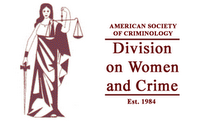 chris and i have both written several times on this blog about the especially harsh treatment of sex offenders in this country. and now the associated press offers one of the oddest stories of the year. a judge in nebraska decided that a man convicted of sexually assaulting a child was too short to survive in prison so she sentenced him to ten years of probation instead.
chris and i have both written several times on this blog about the especially harsh treatment of sex offenders in this country. and now the associated press offers one of the oddest stories of the year. a judge in nebraska decided that a man convicted of sexually assaulting a child was too short to survive in prison so she sentenced him to ten years of probation instead.
i don’t know what to add to this strange piece, so i’ll just give you the entire story from the AP wire:
Judge: Man is too short for prison
SIDNEY, Neb. — A judge said a 5-foot-1 man convicted of sexually assaulting a child was too small to survive in prison, and gave him 10 years of probation instead.
His crimes deserved a long sentence, District Judge Kristine Cecava said, but she worried that Richard W. Thompson, 50, would be especially imperiled by prison dangers.
“You are a sex offender, and you did it to a child,” she said.
But, she said, “That doesn’t make you a hunter. You do not fit in that category.”
Thompson will be electronically monitored the first four months of his probation, and he was told to never be alone with someone under age 18 or date or live with a woman whose children were under 18. Cecava also ordered Thompson to get rid of his pornography.
He faces 30 days of jail each year of his probation unless he follows its conditions closely.
“I want control of you until I know you have integrated change into your life,” the judge told Thompson. “I truly hope that my bet on you being OK out in society is not misplaced.”
what must the victim’s parents think? at 5-1, thompson was likely larger than his child victim. did thompson deserve special treatment? does anyone think a male judge would have shown such leniency?
anyone have any thoughts or comments to share?




